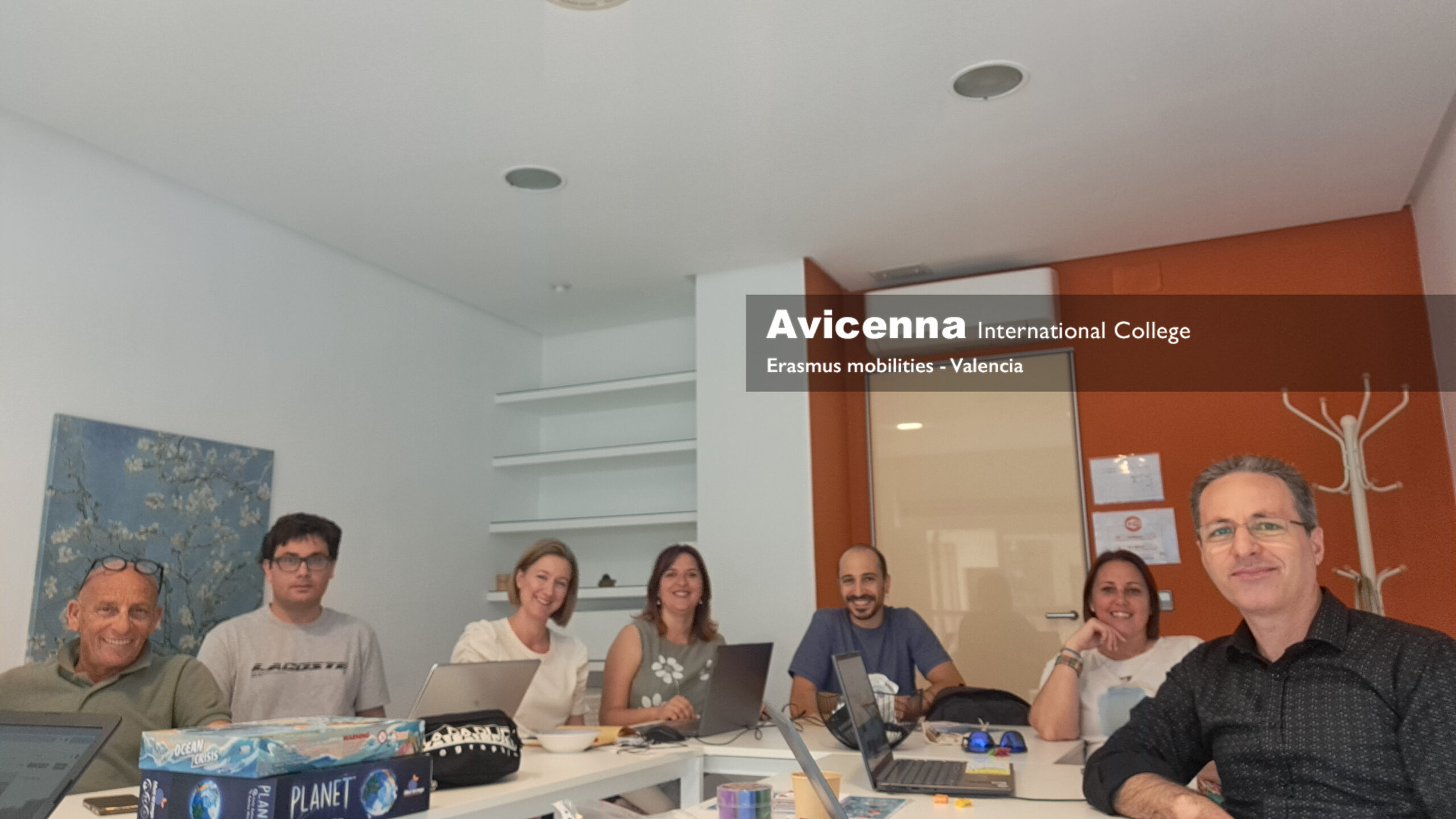Environmental Changes for Sustainable Schools
Two weeks before the start of the course I received an email from Iacopo Falciani, a teacher trainer at Europass Teacher Academy, and knew that I should take my laptop with me. Some basic information about the course and its detailed schedule was explained in his email. I knew that I could join these cultural activities while staying in Valencia:
1. Guided tour city centre. 2. Valencia Card 24h (Saturday)
On the first day of the Erasmus program entitled “Environmental Changes for Sustainable Schools” in Valencia, we had a welcome and introduction by Iacopo at Europass Teacher Academy. Then, two groups on the Erasmus training groups went on a quick city tour to see the region nearby and show the spot that everyone needed to gather at the starting point of the afternoon activity of the next day. Coming back to the classroom, it was time for attendees to have a short presentation about their school and themselves. I presented Avicenna International College and showed them how we deal with the Erasmus activities as a host for student mobility programs and job shadowing activities. Especially, how I have been involved in all those programs with a half-day of IT competency.
Avicenna International College was outstanding among what other school representatives presented about their activities. Then there was a lecture about sustainability and education as the last part of the first day’s schedule.
There was a city tour with a local guide on Wednesday afternoon and we received useful information about cultural and historical places in Valencia. We visited the University of Valencia and its valuable library with old handwritten books.
The main topics of the course were:
– What is sustainability?
– Permaculture
– Bioregionalism
– SDGs and GreenComp
– The xR’s
– Climate Change
We had an overview of all topics and in some cases, we went deep into details. There were well-designed activities for different parts of the course.
Permaculture was one of the topics that we put more time on it studying the following, ETHICS: Earth care – rebuild nature’s capital, People care – nurture self, kin and community, Fair share – set limits to consumption and reproduction, and redistribute surplus.
Then we reviewed the PRINCIPLES:
– OBSERVE AND INTERACT ‘Beauty is in the eye of the beholder’
– CATCH AND STORE ENERGY ‘Make hay while the sun shines’
– OBTAIN A YIELD ‘You can’t work on an empty stomach’
– APPLY SELF-REGULATION AND ACCEPT FEEDBACK ‘The sins of the fathers are visited on the children unto the seventh generation’
– USE AND VALUE RENEWABLE RESOURCES AND SERVICES ‘Let nature take its course’
– PRODUCE NO WASTE ‘Waste not, want not’ ‘A stitch in time saves nine’
– DESIGN FROM PATTERNS TO DETAILS ‘Can’t see the forest for the trees’
– INTEGRATE RATHER THAN SEGREGATE ‘Many hands make light work’
– USE SMALL AND SLOW SOLUTIONS ‘The bigger they are, the harder they fall’ ‘Slow and steady wins the race’
– USE AND VALUE DIVERSITY ‘Don’t put all your eggs in one basket’
– USE EDGES AND VALUE THE MARGINAL ‘Don’t think you are on the right track just because it is a well-beaten path’
– CREATIVELY USE AND RESPOND TO CHANGE ‘Vision is not seeing things as they are but as they will be’
We learnt basic concepts and terminology in this field. We received plenty of sources and links for the materials related to sustainability. We got familiar with the IT tools: Trello, Classroom Screen, Windy, Goosechase, Flipgrid, and mapping tools: Google My Maps, and Scribble Maps.
The learning outcome was more than I expected. There were different field activities related to sustainability. The topics covered by the trainer were the same as the ones on the Erasmus course page. Besides, he introduced some IT tools to help with this course and we learnt how to use those IT tools for other subjects. After using those tools as students, the trainer helped us join as trainers and work in groups, adding each other to our courses and assigning activities as teachers.
Now, I can plan some workshops for teachers at AIC to introduce and practice these IT tools, share my learning outcomes acquired during mobility by other teachers and students and use these tools in my classes.
Two field activities were designed. One of them was to work in groups and discover the information about one type of tree and find it in the region then explain some characteristics of it to the other groups.
The second field activity was related to sustainability topics used in gooschase and had a competition between two groups, finding them in a region shown on the map and taking a photo of it to submit as a solution.
As a multicultural activity, we were matched randomly to prepare some pieces of art for our partner and give the certificates together with this poem, painting, song, etc.
I deeply appreciate the support from AIC for this Erasmus course. Many thanks for Mr. Steve’s help and support from registration for the course till its end.
This mobility was funded by the European Commission.
The information presented here does not necessarily reflect the views of the European Commission.
written by Abdorreza Panahi
14-19 Aug 2023



